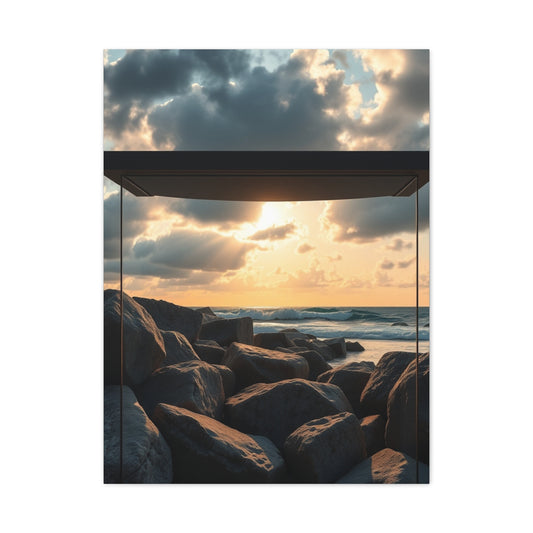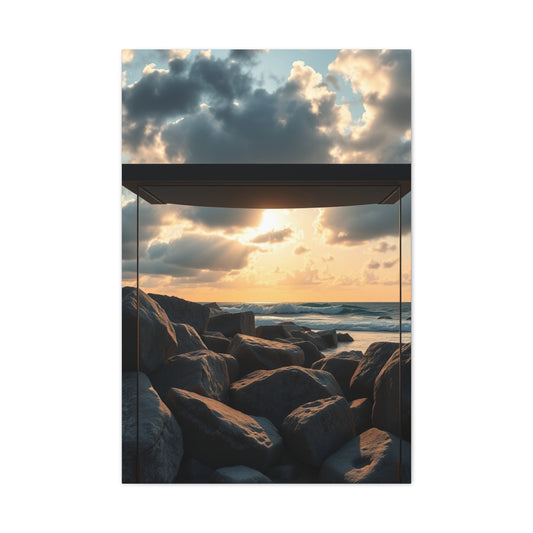Astrophotography, particularly Milky Way photography, has evolved dramatically over the past decade. In 2025, mobile technology is more powerful and intuitive than ever, providing a wide array of applications that simplify the complex dance of celestial timing, geographic precision, and meteorological awareness. The days of solely relying on expensive DSLR gear and elaborate planning are long gone. Now, with just a smartphone and the right suite of mobile tools, photographers can compose awe-inspiring images of the galactic core with impressive clarity and finesse.
Understanding how and when to capture the Milky Way requires more than pointing your camera at the night sky. You need to know about lunar phases, cloud coverage, celestial alignments, light pollution levels, and atmospheric conditions. These variables can change within minutes, drastically affecting your results. To make the most of your astrophotography session, it’s crucial to have a well-rounded selection of apps that streamline the process—from planning your shot to executing it under optimal conditions.
This guide outlines the most powerful mobile tools available on both iOS and Android platforms that will elevate your Milky Way photography in 2025. Whether you're a hobbyist exploring starry nights or a seasoned astrophotographer aiming for perfection, these apps are indispensable companions under the cosmos.
Moonlight Forecasting with Deluxe Moon Pro
Platform: iOS & Android
In the intricate realm of Milky Way photography, one often underestimated yet pivotal variable is lunar illumination. Unlike casual stargazing or general night photography, astrophotography that seeks to capture the Milky Way in all its intricate glory demands meticulous attention to darkness. Even a partially illuminated moon can significantly diminish the visibility of the galactic arc, softening the contrast that gives these celestial images their ethereal power. Deluxe Moon Pro rises as an indispensable companion for any night photographer by offering a sophisticated and highly accurate suite of lunar tracking tools.
The core utility of Deluxe Moon Pro lies in its ability to forecast moon phases and luminosity across any date and geographic location. The Milky Way becomes visible only under specific conditions—primarily during the new moon phase or at times when the moon has either set or has not yet risen. Deluxe Moon Pro simplifies the process of identifying those pristine, shadow-laden nights that serve as ideal backdrops for capturing the galactic center, star clusters, and nebulae with maximum contrast and clarity.
|
Related Catagories: |
This application is not just functional; it is beautifully crafted. With an interface that strikes a balance between aesthetic elegance and scientific rigor, Deluxe Moon Pro provides a user experience that is both immersive and educational. It includes an interactive moon calendar that allows users to scroll through days, weeks, and months with fluid precision. This makes long-term planning for photography trips not only possible but enjoyable. Each day on the calendar offers at-a-glance information on moonrise and moonset timings, the exact phase of the moon, its percentage of illumination, and its zenith position during the night. For photographers looking to avoid lunar glare, this means they can calculate down to the minute when the moon will no longer impact their frame.
A deeper exploration of the app reveals tools that extend far beyond standard lunar charts. One such feature is the moon void-of-course tracker, which, although often used in astrological contexts, can serve practical purposes in astrophotography by indicating transitional lunar periods where changes in brightness or sky clarity may occur. Additionally, sidereal time information—used by astronomers to locate celestial objects based on Earth’s rotation—provides a highly precise alignment resource for those using star trackers or equatorial mounts.
Deluxe Moon Pro also integrates elements of space weather analysis and geomagnetic field predictions. This added layer of forecasting helps users avoid photographing during periods of geomagnetic instability, which can occasionally produce faint auroras or disrupt atmospheric clarity—both of which can affect long-exposure images of the night sky. Although such events are rare, their inclusion in the app underscores its commitment to serving both amateur and advanced astrophotographers.
Another standout aspect is the customizable widget functionality. Users can embed live moon phase updates and upcoming lunar events directly on their home screens, providing quick-glance references without needing to open the app each time. These widgets are particularly useful when monitoring upcoming new moons or checking if your location will experience moonless hours during astronomical twilight.
For those who travel frequently to pursue the perfect dark sky, Deluxe Moon Pro supports multiple saved locations. This allows users to compare lunar visibility across various destinations—from high desert plateaus to coastal cliff points—helping to determine where the darkest conditions will be found. This feature is incredibly beneficial for astrophotographers seeking remote, low-light-pollution environments where the night sky reveals its most intricate secrets.
Beyond the lunar-centric tools, Deluxe Moon Pro dives into a realm that merges science with the art of celestial timing. Its interface includes lunar gardening calendars, tidal predictions, and traditional lunar zodiac interpretations, which, while not essential for astrophotography, offer a multidimensional perspective on how the moon affects Earth and our interaction with the cosmos. These additional layers enrich the experience for users who appreciate the broader rhythm of nature’s cycles, even if their primary focus is astrophotography.
In terms of accessibility, the app caters to both casual hobbyists and seasoned astrophotographers. Beginners will find its visuals engaging and informative, while professionals will appreciate the granular data sets and predictive accuracy. The learning curve is minimal, thanks to clear iconography and tooltip guidance that makes every function easy to understand. Its absence of clutter and its seamless transitions between different views ensure that even during late-night field sessions, users won’t be fumbling through convoluted menus or settings.
Importantly, Deluxe Moon Pro functions flawlessly in offline mode, a crucial feature for those shooting in remote areas where cellular signals are weak or nonexistent. Once your location is set, the app stores all the necessary calculations for moonrise, moonset, and phase transitions, ensuring uninterrupted utility even when you’re deep in wilderness or atop a mountain ridge.
What sets this app apart in a saturated market of lunar trackers is its depth of customization. Users can choose from different visual themes, time formats, and astronomical settings, allowing them to tailor the interface to their specific needs and aesthetic preferences. These thoughtful options make the app not just a tool but an integral part of a photographer’s pre-shoot ritual.
Finally, it’s worth mentioning the app’s consistent updates and strong developer support. New features are rolled out regularly, often based on community feedback, ensuring that Deluxe Moon Pro evolves in pace with both technological advances and the nuanced needs of the astrophotography community. The pricing is transparent, with a one-time premium unlocking the full set of advanced planning tools—making it a cost-effective solution for a high-caliber application.
Elevating Night Photography Through Lunar Precision
In the dynamic discipline of night sky photography, mastering moonlight is one of the most effective ways to elevate the quality of your shots. The subtle interplay between starlight, galactic dust, and shadow defines the visual drama of every Milky Way image. Deluxe Moon Pro arms photographers with the foresight to anticipate these natural rhythms, converting uncertainty into confident execution.
Whether you’re planning a single-night session from your backyard or orchestrating a multi-night expedition to a dark-sky sanctuary, this app serves as both your guide and your meteorologist. Its comprehensive moonlight forecasting capabilities allow you to optimize every session, aligning your creative goals with the rhythms of the lunar cycle.
Deluxe Moon Pro does more than just inform—it empowers. It turns abstract lunar data into actionable insights, enabling photographers to harness the full potential of the night. In 2025, as mobile tools become more integrated into the photographic process, this app stands as a prime example of how technology can deepen our relationship with the stars.
Virtual Stargazing with Stellarium Mobile
Platform: iOS & Android
Stargazing in the digital age has transformed from a passive activity into an interactive journey through space and time. For astrophotographers—particularly those focused on capturing the awe-inspiring grandeur of the Milky Way—having precise knowledge of celestial alignments and sky compositions is paramount. Stellarium Mobile bridges the gap between night sky curiosity and astrophotographic mastery, offering an immersive, real-time stargazing experience directly from your smartphone.
Stellarium Mobile operates as a pocket-sized planetarium, harnessing your device's GPS, gyroscope, and internal sensors to accurately map the night sky from your exact location. The app doesn’t just show you stars—it reconstructs the celestial dome with scientific accuracy, overlaying constellations, planets, nebulae, and the galactic arc right on your screen. The moment you lift your phone skyward, it becomes a celestial lens into the universe.
What sets Stellarium Mobile apart in a sea of astronomy apps is its remarkably fluid simulation engine. Unlike static sky charts, this application adapts to your movement, location, and even time shifts. Planning a night photography trip two months from now? Simply adjust the date and time, and Stellarium will show you precisely how the sky will look from your chosen coordinates. You can track the exact position of the Milky Way core, anticipate its rise and set times, and align your compositions with bright stars or foreground landmarks.
Astrophotography is equal parts planning and execution, and this app excels at making the former an intuitive process. It allows users to zoom in on specific star systems, access deep-sky catalogs containing thousands of celestial objects, and preview sky orientations to find the best framing opportunities for long-exposure captures. From high-altitude galactic plane alignments to low-horizon planetary conjunctions, Stellarium Mobile puts cosmic choreography at your fingertips.
For photographers aiming to minimize light pollution, the app provides an option to enable red-light night mode, a subtle but essential feature that preserves your night vision during dark sky observations. This small detail underscores the developers' understanding of real-world night sky conditions and the challenges astrophotographers face when transitioning from planning to active shooting.
Its accuracy is powered by robust astronomical databases, including cataloged stars, satellites, comets, and even artificial Earth-orbiting objects. Stellarium Mobile is constantly updated with ephemerides and orbital data, ensuring your sky simulation reflects the most current cosmic configurations. This is particularly advantageous when capturing time-sensitive events such as meteor showers, eclipses, or planetary transits that demand precision timing and location awareness.
Beyond its technical capabilities, the user experience is elegantly simple. The interface is free of clutter, favoring gesture-based controls and fluid transitions between celestial bodies and sky segments. Constellations are drawn with a level of artistic fidelity that makes even casual sky watching feel magical, yet the app never loses sight of its scientific backbone. It serves both as an educational tool and a precision instrument, enabling users to toggle between mythological overlays, satellite paths, and scientific nomenclature.
Customization is another strong point. Photographers can create custom observing locations, set local horizons, and tweak atmospheric simulation variables such as light refraction or sky brightness. For those who shoot in elevated regions or during specific meteorological conditions, these adjustments provide a rare degree of environmental fidelity. You can even enable or disable the Milky Way rendering itself, depending on whether you're using the app for immersive sky navigation or real-time astrophotography alignment.
Another feature of note is the time-lapse simulation function. By moving forward or backward through time, users can observe celestial movements with accelerated clarity. This is ideal for plotting star trails, aligning cameras with predicted planetary groupings, or planning long-duration exposures that follow the rotation of the Earth. Time-lapse planning is often underutilized, yet it’s an essential skill for photographers capturing the Milky Way as it arches across the night sky.
For astrophotographers who use additional tools like equatorial mounts, star trackers, or telescopic rigs, Stellarium Mobile also integrates with external equipment. With the proper adapter or mount interface, you can align your gear using the same coordinates and visual data shown on the app, drastically improving setup speed and accuracy. This makes the app not just a visualization tool but a practical element of the photographic workflow.
Even without physical gear integration, Stellarium Mobile complements other astrophotography tools such as PhotoPills or The Photographer’s Ephemeris by adding a three-dimensional sense of spatial orientation. You can identify where in the sky to aim, when to begin your exposure, and how high the galactic plane will be above the horizon—all within a single interface.
Its educational depth is also notable. Users can tap on any object in the sky for a full breakdown of its characteristics: magnitude, distance from Earth, rise/set times, spectral class, and historic background. Whether you're capturing the Sagittarius constellation or a distant globular cluster, Stellarium Mobile gives you the contextual data to understand what you're photographing, enriching your connection to the subject matter.
The app is frequently updated, and developers are responsive to user feedback, often implementing suggestions that improve performance or expand its astronomical scope. While there is a modest fee for the premium version, it is a one-time investment that unlocks a universe of features with no recurring subscription, a refreshing model in an era of microtransactions.
For those operating in remote environments without stable data service, the app includes offline functionality once your location and date are loaded. This ensures reliability in the field—whether you’re shooting from a mountain summit or a desert plateau far removed from urban light pollution.
Mapping the Milky Way with Precision and Artistry
Stellarium Mobile is more than an app—it’s a gateway into the cosmos. In the evolving world of Milky Way photography, where technology meets imagination, this tool offers both the technical precision and the poetic immersion needed to create compelling astrophotographic work. It transforms sky mapping from a tedious chore into a creative exercise, where planning becomes part of the artistic journey.
In 2025, as smartphone capabilities push the boundaries of mobile photography, apps like Stellarium Mobile serve as essential companions. They provide the structure and insight necessary to navigate the complexities of night sky photography while also igniting curiosity about our place in the universe. Whether you're composing a wide-angle shot of the galactic core or aligning a telephoto lens with a deep-sky nebula, Stellarium ensures you do so with confidence, clarity, and creative control.
Armed with this digital observatory, photographers no longer need to rely on guesswork or fragmented tools. With every frame captured under a star-filled sky, Stellarium Mobile helps turn fleeting moments of cosmic beauty into enduring visual stories.
Location Planning via The Photographer’s Ephemeris (TPE)
Platform: iOS & Android
When it comes to capturing the Milky Way in its most majestic form, what lies beneath the stars is just as important as the stars themselves. The artistry of astrophotography lies not only in recording the celestial realm but in seamlessly integrating it with compelling earthly foregrounds—be it weathered mountain peaks, coastal arches, desert canyons, or ancient architecture. The Photographer’s Ephemeris, widely known as TPE, is a location-scouting and celestial alignment tool that turns this vision into a precise, executable plan.
Unlike general weather apps or basic star maps, TPE is engineered specifically for photographers, with a focus on planning outdoor imagery where natural light and celestial dynamics play a defining role. Whether you're composing a wide-angle shot of the Milky Way's galactic bulge cresting over a tree line or framing it through the window of an abandoned cathedral, TPE equips you with the tools to anticipate and optimize every element in the frame.
What makes TPE indispensable for astrophotography enthusiasts is its dynamic light simulation engine. With an intuitive, map-based interface, users can select any location on Earth and see exactly how sunlight and moonlight will interact with the landscape at any given time. Through overlays on satellite imagery, you can trace the path of the sun and moon, view their elevation angles, and even anticipate shadow patterns as they fall across terrain features. This is critical for those aiming to capture the galactic core in harmony with terrestrial silhouettes.
Where the app truly excels, however, is in its Milky Way planning features. TPE allows photographers to visualize the arch of the Milky Way as it rises and sets throughout the night and across different seasons. With time controls, you can scroll forward or backward to see when the galactic plane will align with natural or architectural landmarks. This is particularly helpful when planning to shoot during the short window of astronomical twilight, or when composing images where precise alignment is essential for storytelling or symmetry.
TPE's strength lies not only in what it shows but in how it shows it. The application includes a 3D augmented reality mode called "TPE 3D," which provides a simulation of the view from your selected location, factoring in elevation data and horizon obstructions. This means that even if you’ve never visited a site before, you can simulate how the stars, moon, and sun will behave there, dramatically reducing the uncertainty and guesswork typically involved in remote astrophotography.
This is particularly beneficial for those venturing into wilderness areas, national parks, or international dark sky reserves where scouting ahead of time is impractical. With topographic modeling and shadow forecasts based on terrain elevation, TPE becomes a virtual scout, allowing you to visualize how celestial bodies will emerge behind hills, valleys, or cliffs without ever setting foot on site.
Beyond celestial alignments, TPE offers a number of practical features geared specifically toward serious outdoor photographers. Users can input their own field notes, mark GPS coordinates, create shot lists, and export data for later reference. Integration with mapping services also means you can plan your shoot routes directly within the app, calculate walking or hiking distances, and assess the accessibility of rugged terrain.
|
Related Catagories: |
Another powerful function is its ability to synchronize lunar and solar cycles with your intended composition. For Milky Way photography, avoiding moonlight is essential to preserving contrast and detail. TPE lets you track moonrise and moonset times alongside moon phase data, ensuring your shoot takes place under ideal conditions of darkness. Additionally, its twilight breakdowns—dividing civil, nautical, and astronomical dusk and dawn—enable precise planning for those critical transition moments when the sky shifts from illuminated to starlit.
Photographers who travel across time zones or hemispheres will also appreciate TPE’s universal time control features. You can toggle between local time and UTC, helping to coordinate international photography trips and collaborative projects. This is especially useful during astrophotography workshops or group excursions where timing is crucial and coordination must be exact.
The user interface of TPE is both elegant and highly functional. Designed for use in the field, it features large icons, responsive zooming, and smooth layer transitions, all of which are vital during low-light conditions. It also supports offline mode, so once you load the maps and data for your destination, you won’t need a signal in the field—ideal for remote locations far from cellular networks.
The one-time purchase model also makes TPE a long-term asset rather than a recurring expense. Its cost is modest compared to the benefits it offers, especially when you consider how much effort and travel expenses go into planning a serious astrophotography expedition. For anyone serious about their craft, this investment pays for itself in the form of better-prepared shoots and dramatically improved photographic outcomes.
TPE isn’t just an app—it’s a comprehensive planning assistant. Whether you’re a casual stargazer looking to align the moon with a lighthouse or a professional astrophotographer composing an epic Milky Way panorama above alpine terrain, TPE provides a level of environmental and astronomical insight that no other mobile app replicates quite as thoroughly. It eliminates the guesswork from location scouting, replacing it with actionable data and compelling visualizations.
Bridging Sky and Earth with Strategic Alignment
The magic of Milky Way photography lies in the synergy between the infinite and the intimate—between the stars above and the landscape below. The Photographer’s Ephemeris is uniquely positioned to help photographers orchestrate that synergy with skill and foresight. It empowers creatives to not only imagine dramatic compositions but to execute them with accuracy and confidence.
In a genre where timing, precision, and light geometry are critical, TPE transforms preparation from a logistical burden into a creative process. It enables photographers to scout sites virtually, model lighting conditions, and schedule shoots for the perfect moment when the galactic core arcs above a ridge or cascades into the ocean horizon. These moments are fleeting, often occurring just a few times per year in any given location. With TPE, you don’t have to hope you’re in the right place at the right time—you’ll know you are.
The combination of satellite imagery, topographic modeling, celestial alignment visualization, and real-time planning tools makes this app one of the most powerful resources available to astrophotographers in 2025. As the craft of Milky Way photography continues to evolve, TPE remains an essential instrument in the mobile toolbox of anyone who wants to create photographs that are not only beautiful but meticulously composed with the universe as a partner.
Through intelligent design and data-driven insight, The Photographer’s Ephemeris turns the vast unpredictability of night sky photography into a manageable and thrilling creative challenge. Whether you're photographing the heavens from a desert plateau or a frozen fjord, TPE ensures you have the vision—and the tools—to frame the stars exactly as you imagined them.
Reliable Sky Predictions from The Weather Channel App
Platform: iOS & Android
In the meticulous world of astrophotography, where capturing celestial beauty depends on precise timing and atmospheric clarity, reliable weather forecasting becomes a non-negotiable part of planning. Even the most carefully orchestrated Milky Way photography session can be instantly compromised by unexpected cloud cover, high humidity, or wind-driven haze. This is where The Weather Channel app proves indispensable, offering a robust meteorological toolkit that empowers photographers to anticipate and respond to changing sky conditions with confidence.
Astrophotography is unique among photographic disciplines in its dependency on environmental transparency. While daylight photographers can often work around clouds or embrace moody skies, shooting the stars demands an unimpeded view of the heavens. Any form of atmospheric obstruction—whether dense clouds, thin cirrus layers, or rising fog—can scatter light and blur celestial details. The Weather Channel app provides granular weather updates, allowing astrophotographers to fine-tune their plans and maximize every shooting opportunity.
At the heart of the app is its hyper-local forecasting engine. By using GPS-based location tracking, it delivers hourly updates specific to your current coordinates, not just your nearest city. This is vital for night photographers who frequently travel to remote landscapes, rural vistas, or national parks in search of low light pollution. Knowing precisely when cloud cover will move in or clear out can be the difference between a wasted drive and a once-in-a-lifetime capture of the galactic core in full brilliance.
One of the app’s most valuable features for night sky shooters is its real-time cloud cover map. This interactive visual shows cloud movement across regions in near real-time, enabling users to track large systems, patchy weather zones, or promising clear sky corridors. Coupled with wind speed and direction overlays, photographers can predict whether obscuring clouds are likely to dissipate, linger, or intensify as the evening progresses. This proactive information lets users decide whether to relocate, delay, or go ahead with their shooting session.
The inclusion of humidity and dew point data further elevates The Weather Channel app’s relevance to astrophotography. High humidity can lead to condensation on camera lenses and increase the presence of airborne particulates that scatter starlight. Dew build-up is especially problematic during extended exposures or timelapse sessions. By monitoring dew points in advance, users can prepare protective measures such as lens heaters or weather shields, ensuring their gear remains functional and their images crisp.
For astrophotographers interested in photographing the sky during twilight or golden hour transitions, the app provides detailed sunrise and sunset times as well as civil, nautical, and astronomical twilight breakdowns. This level of precision is essential for those capturing both the fading of daylight and the emergence of the first stars—a beautiful juxtaposition often sought in composite or transitional Milky Way imagery.
The app also includes moon phase tracking, offering crucial information for Milky Way visibility. A brightly illuminated moon can wash out the sky, diminishing contrast and obscuring the fine structures of the galactic plane. Photographers can plan around moonrise and moonset times, using the app to pinpoint those elusive moonless hours that create the ideal canvas for celestial photography. The integration of UV index and visibility ratings adds even more value, with visibility forecasts acting as a quick-reference guide for atmospheric clarity.
One of the standout advantages of The Weather Channel app is its clean, user-focused interface. Weather data is presented in a visual, digestible format, reducing the need for interpretation or technical jargon. For example, the app uses easy-to-read graphs and hourly breakdowns for sky clarity, wind gusts, and temperature trends, allowing photographers to make quick yet informed decisions even in the field. The color-coded radar maps and predictive models give you a sense not just of current conditions but of how those conditions are expected to evolve over the course of the night.
Photographers shooting in variable climates or transitional seasons—where weather patterns can change within hours—will especially appreciate the app’s future radar feature. This allows users to preview the next 6 to 12 hours of cloud movements, wind shifts, and temperature changes, all of which contribute to planning an efficient night shoot. This kind of foresight is especially critical for those traveling long distances or investing considerable effort in setting up timelapse rigs or star trackers.
While the free version of The Weather Channel app is impressively functional, optional upgrades unlock premium features such as extended radar forecasts, lightning strike alerts, and ad-free usage. These are particularly useful for photographers who operate in storm-prone regions or who prioritize uninterrupted focus during delicate nighttime sessions.
Another noteworthy feature is the customizable weather alerts. Users can set specific thresholds for conditions like wind speed, humidity, or cloud cover, triggering push notifications when criteria are met or exceeded. This is an invaluable time-saving tool for those managing busy schedules and needing to know precisely when the night sky will be favorable for photography.
In terms of field performance, the app excels. It remains responsive even in areas with limited mobile coverage, often pulling cached data or syncing quickly when service is restored. For photographers operating deep in the wilderness or along coastlines with unpredictable reception, this dependability ensures you won’t be caught off guard by an unexpected shift in weather.
The app’s community and social features are an added bonus. Users can share local weather conditions, upload sky images, and provide storm updates, all of which can be useful for photographers relying on real-time observations. The sense of community support is subtle but beneficial—especially for those traveling solo or scouting unfamiliar territories.
Planning Perfect Nights with Meteorological Precision
In 2025, as the tools of astrophotography become more mobile and democratized, weather forecasting remains one of the critical skills that distinguish a prepared photographer from a hopeful one. The Weather Channel app provides more than just forecasts—it offers a strategic advantage. By equipping photographers with actionable, minute-by-minute insights into atmospheric behavior, it transforms environmental unpredictability into a manageable variable.
Whether you’re capturing the Milky Way rising above a sandstone arch, photographing constellations mirrored on a high-altitude lake, or documenting a meteor shower in a wind-swept desert, this app gives you the situational awareness to adapt and succeed. It complements other planning tools by addressing one of the most unpredictable aspects of night sky photography: the sky itself.
The synthesis of hyper-local accuracy, intuitive design, and advanced features makes The Weather Channel app an essential tool for both casual sky watchers and seasoned astrophotographers alike. It enables a deeper level of planning and situational control, allowing artists to pursue their vision without being at the mercy of meteorological uncertainty.
In a field where timing is everything and visibility is precious, this app doesn’t just inform—it empowers. From planning a spontaneous shoot in a clearing sky to navigating the complexities of moon phases and humidity, The Weather Channel app offers a reliable, adaptable, and intelligent solution for those who dare to aim their lenses at the stars.
All-in-One Planning with PhotoPills
Platform: iOS & Android
PhotoPills is the Swiss Army knife of Milky Way photography planning. It consolidates every essential feature a night photographer could need: augmented reality views of celestial paths, galactic core visibility charts, exposure and depth-of-field calculators, and hyperfocal distance tools.
The true gem is its augmented reality mode, which overlays the Milky Way’s trajectory on your camera feed. This allows for real-time composition decisions without the guesswork. With extensive tutorials, a highly active user community, and professional-grade features, PhotoPills is an invaluable app for those ready to elevate their astrophotography from casual to expert level. The app’s modest price point makes it accessible to enthusiasts and professionals alike.
Golden Hour Alerts from Sol: Sun Clock
Platform: iOS (Android alternative: Sunclock)
Sol: Sun Clock provides a minimalist yet powerful interface to track phases of daylight, including civil, nautical, and astronomical twilights—key moments for astrophotographers. Knowing when the night sky will be fully dark, or when morning twilight begins, is crucial for timing your shots.
Sol breaks down each phase with high accuracy, allowing you to receive alerts before the best light fades or before stars begin to reappear. Android users can opt for Sunclock, which offers similar features with a slightly different user experience. Both apps are lightweight, accurate, and incredibly useful for those planning shoots down to the minute.
Real-Time Sky Maps with GoSkyWatch Planetarium
Platform: iOS
GoSkyWatch Planetarium enhances your Milky Way sessions by offering a highly visual and interactive star map. Simply point your device at the sky to receive real-time data on stars, constellations, planets, and the Milky Way's location.
The app includes time-shift functionality, enabling users to simulate what the sky will look like at different times or dates. This is particularly helpful when planning shoots around moon cycles or specific celestial events. With a clean interface and strong accuracy, this app is perfect for on-the-fly planning and celestial verification.
Star Tracking Capabilities from SkySafari
Platform: iOS & Android
SkySafari delivers a database-rich experience for astronomers and photographers alike. Its powerful interface allows for simulation of past, present, and future skies with extraordinary detail. You can explore planetary alignments, track star trails, and even follow satellite movements—making it perfect for photographers looking to include astrophysical phenomena in their shots.
SkySafari’s depth lies in its research-grade star charts and telescope control integration, which is particularly useful if you're using a star tracker to align long-exposure shots. The paid tiers offer deeper control and customization, unlocking a universe of potential for any astrophotographer.
Sky Identification Made Simple with SkyView
Platform: iOS & Android
SkyView takes the mystery out of the night sky by letting users instantly identify stars, constellations, planets, and even satellites. By simply pointing your phone at the sky, you can verify that you’re capturing the correct section—whether that’s the galactic core, Polaris, or specific constellations that complement your frame.
This app is especially handy for those still learning to navigate the night sky. It’s a blend of education and application, making it both fun and practical. The full version enhances responsiveness and accuracy, while the free Lite version is a solid starting point.
Precision Celestial Predictions with Sun Surveyor
Platform: iOS & Android
Sun Surveyor rounds out this list with an incredibly robust set of features for precise celestial planning. It provides a 3D compass, map view, and augmented reality interface to visualize the Milky Way’s movement across the sky.
You can see exactly when and where the galaxy will rise or set in your location, aiding in strategic framing and shot timing. The app is highly customizable, supporting a wide range of cameras and landscape variables. It’s a dream tool for serious photographers aiming for technically flawless compositions.
Final Thoughts: Capture the Cosmos with Confidence
Milky Way photography in 2025 is both a technical and artistic endeavor. With the right mobile tools, your smartphone becomes not just a camera but a command center for celestial storytelling. These apps provide everything from real-time star maps to long-range weather forecasts and precision exposure calculators.
Gone are the days when only the most expensive gear could produce magazine-worthy nightscapes. With careful planning, reliable mobile tools, and a deep appreciation for the cosmos, anyone can craft stunning images of the galaxy. Whether you're capturing the Milky Way rising over sand dunes or framed between alpine peaks, these apps ensure you're always prepared for the perfect shot.




























